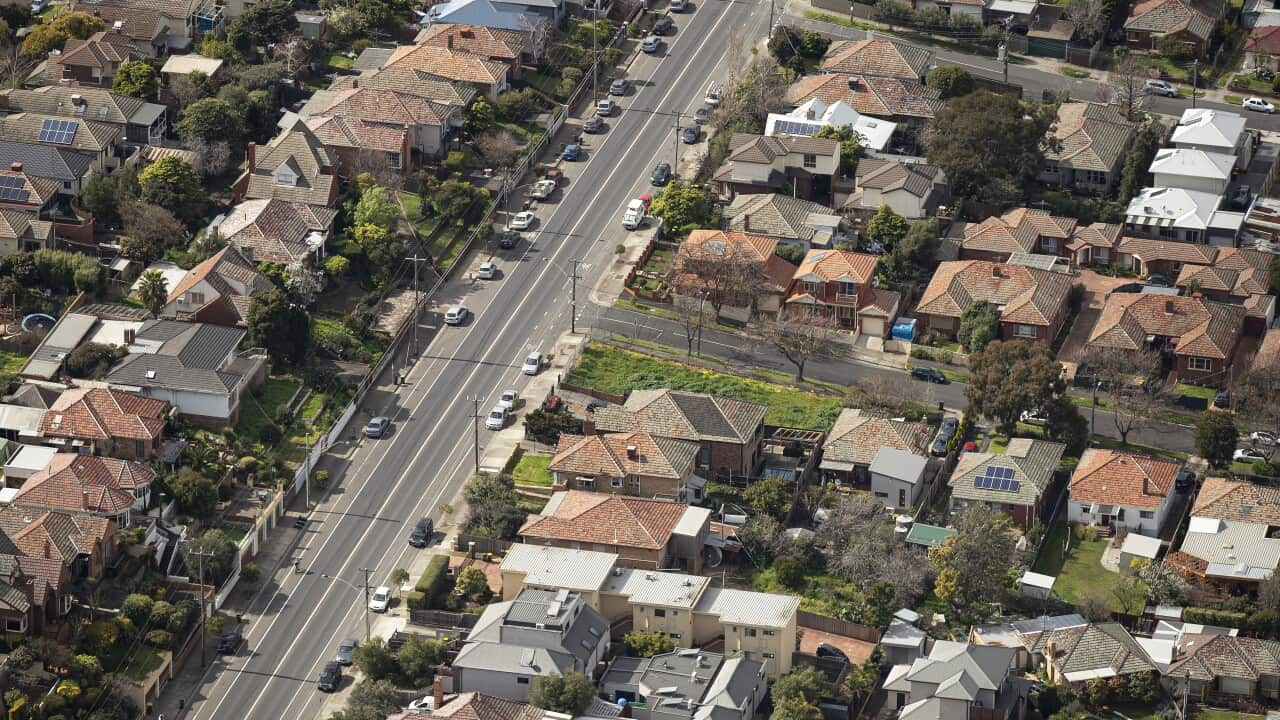Key Points
- Residential property values in nearly 30 per cent of Australian suburbs have fallen, according to a new report.
- House prices have dropped in almost 80 per cent of Melbourne suburbs.
- Perth is the only capital city where house prices in all suburbs have increased.
The value of houses in almost 30 per cent of Australian suburbs has fallen across the three months to August, according to data analysed by property research firm CoreLogic.
The company said declines were becoming as well as cost of living and affordability challenges continued.
CoreLogic conducted a quarterly study of 3,655 suburbs across the country and found that house prices in almost one-third (29.2 per cent) had fallen. In the three months to August last year prices had dropped in 17.2 per cent of suburbs.
CoreLogic economist Kaitlyn Ezzy said: “While values are still rising at the national level, albeit at a slowing pace, beneath the headline figure, we’re starting to see some weakness, particularly in Victoria.”
Melbourne and Sydney house prices fall
Price drops in Melbourne and Victorian regional areas were more widespread than in any other part of Australia.
In Melbourne, the value of residential properties declined in nearly 80 per cent of the suburbs analysed by CoreLogic between June and August.
House prices in suburbs such as Crib Point on the Mornington Peninsula and Caulfield East in inner south Melbourne dropped almost 7 per cent and 6 per cent respectively.
The median house price of properties in Crib Point, nearly $750,000, fell by more than $50,000.
Ezzy attributed this to multiple factors, including increased supply.
“In Melbourne, where almost 80 per cent of suburbs are recording a quarterly decline in value, advertised listings levels are almost 30 per cent above the previous five-year average for this time of year,” she said.
“Additionally, Melbourne has also seen a healthier flow of new housing stock, adding to the region’s overall housing supply and putting downward pressure on values.
“In Melbourne, declines were most concentrated in more affluent regions, with 100 per cent of suburbs in the Mornington Peninsula recording decreasing values, while just one suburb in the inner-south (Carrum) and three suburbs in the inner-east (Box Hill, Deepdene, Canterbury) saw values rise over the quarter. A similar pattern played out in regional Victoria, with Ballarat (100 per cent), Geelong (97.8 per cent) and Bendigo (89.3 per cent) recording the highest concentration of falls.”
House prices in Sydney also trended downward, according to the CoreLogic data.
House values dropped in almost 26 per cent of Sydney suburbs analysed.
Prices in the inner-west suburb of Rodd Point fell the most at 8.1 per cent, driving a median house price of over $3.1 million down by nearly $300,000.
This was followed by Concord, where a median house price of $2.6 million has declined by nearly $150,000, or 5.2 per cent.
Ezzy said increased supply is the reason behind the downward trend in Sydney too.
“Sydney has also seen a steady accumulation of advertised supply, from roughly -10 per cent below average at the beginning of the year to 5.4 per cent above average over the four weeks to September 8,” she said.
“As supply levels normalised across the city, buyers have had more choice and more power at the negotiation table, taking some of the steam, that had previous fed value rises, out of the market, resulting in more suburbs starting to record a decline in value.”
Growth in house prices in Western Australia
CoreLogic analysed house prices in Western Australia and found an overwhelming majority grew in value.
Of the 146 suburbs analysed across regional WA, 127 recorded a quarterly rise in the value of dwellings, while there was growth in the 302 Perth suburbs analysed.
Ezzy called this “a remarkable turnaround in the Perth market”.
“In the three months to September 2022, 60.1 per cent of Perth suburbs were in decline. In the three months to August 2024, there was not a single suburb analysed where prices had fallen,” she said.
“Across Perth, value increases ranged from a 1.8 per cent rise in Marmion in the city’s northwest, to 10.6 per cent in Henley Brook in Perth’s northeast.”
Ezzy said the total advertised supply in Perth is approximately 43 per cent below average.
“Perth has shown exceptional strength over the past year, with values up 5.7 per cent over the three months to August and 24.4 per cent over the past year.”
Coupled with the shortfall in listings and the strong flow of interstate migrants into WA, its relative affordability compared to Sydney and Brisbane, and strong economic conditions had helped keep upwards pressure on values.


